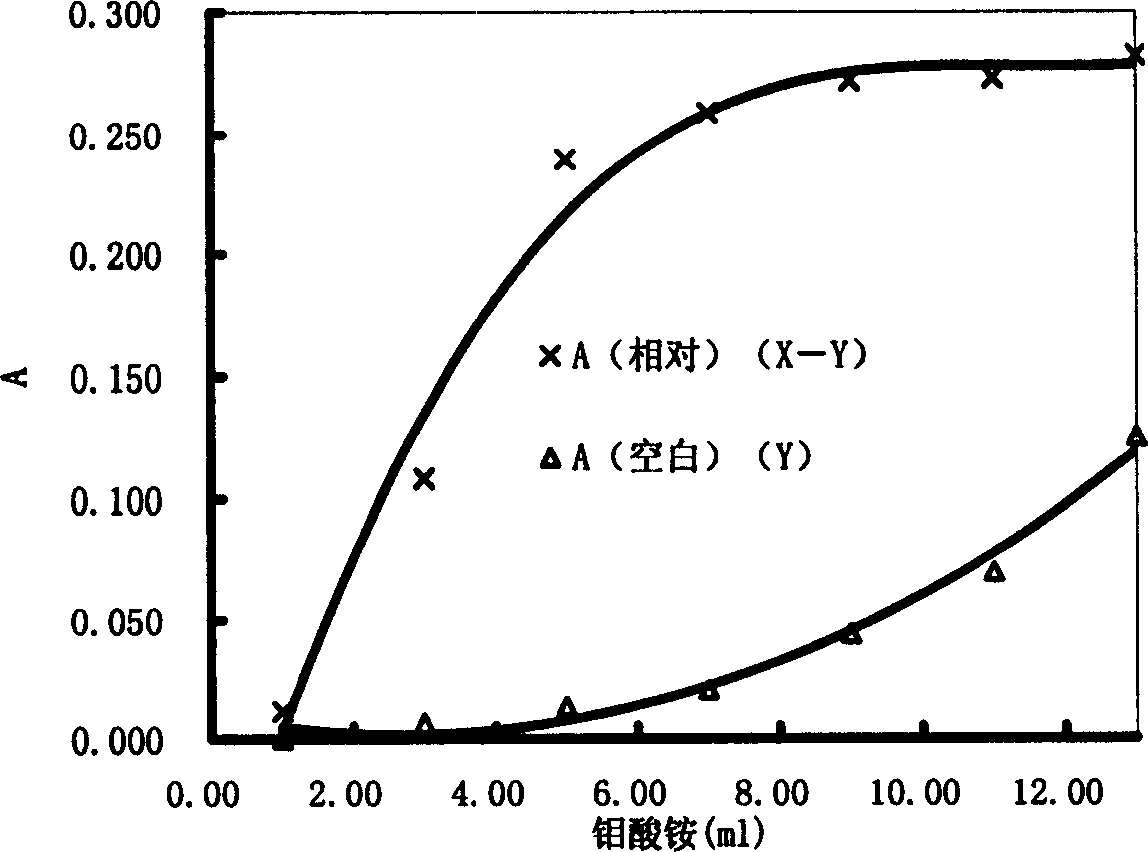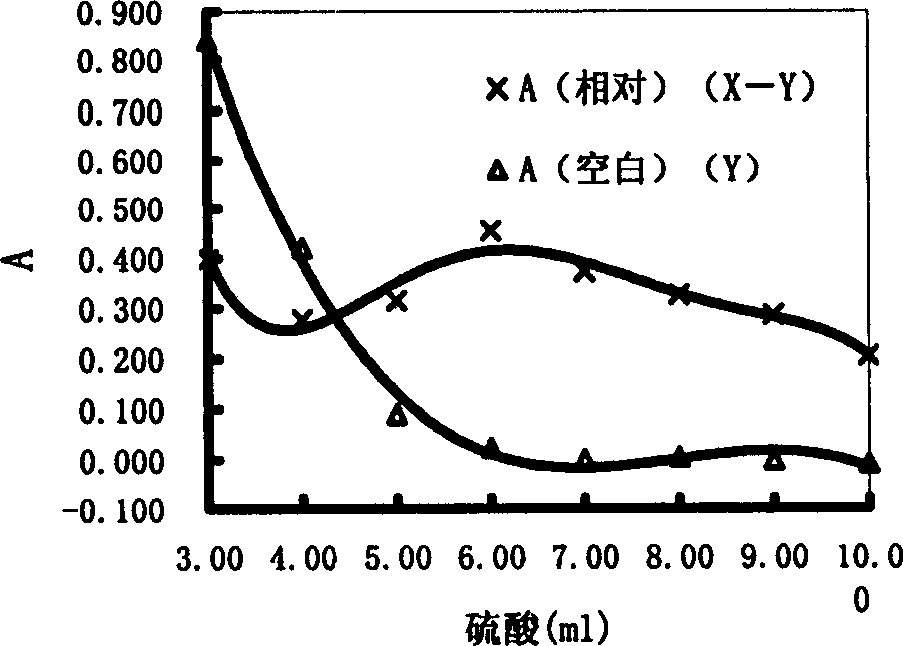Spectrophotometry for measuring residual phosphorus content in benzoxazole class polyfibre or film
A technology of polybenzoxazole and spectrophotometry, which is applied in the direction of color/spectral characteristic measurement, analysis by making materials undergo chemical reactions, and material analysis by observing the influence of chemical indicators, etc., which can solve complex operations, Problems such as expensive instruments and degradation of fiber mechanical properties, etc., to achieve the effect of simple equipment and easy operation
- Summary
- Abstract
- Description
- Claims
- Application Information
AI Technical Summary
Problems solved by technology
Method used
Image
Examples
Embodiment 1
[0050] Phosphorus standard solution: Weigh 0.1791g of potassium dihydrogen phosphate dried at 105°C (1 hour) and dissolve it in water, transfer it to a 250mL volumetric flask, dilute to the mark, and use it as the stock solution; dilute the stock solution accurately 50 times (with Accurately take 5mL with the pipette, transfer to a 250mL volumetric flask, dilute to the mark), and make 0.01mg (P0 4 3- ) / mL (3 μgP / mL) phosphorus standard solution;
[0051] Ammonium molybdate-sulfuric acid solution: slowly add 100mL 98% concentrated sulfuric acid into 500mL deionized water, mix with 400mL2.5% ammonium molybdate solution after cooling;
[0052] Stannous chloride-glycerin solution: 2.5g SnCl 2 .2H 2 Dissolve O in 100mL glycerin, dissolve in a warm water bath, and store in a brown solution bottle;
[0053] Ammonium molybdate solution: Dissolve 25g of ammonium molybdate in an appropriate amount of deionized water, transfer to a 250mL volumetric flask, and dilute to the mark;
[...
Embodiment 2
[0057] Take 9 mL of phosphorus standard solution, 7 mL of ammonium molybdate-sulfuric acid solution, 5 drops of stannous chloride-glycerol solution, develop color for 10 min, and scan at wavelengths between 500 and 940 nm to obtain absorbance at different wavelengths and make absorption curves, such as figure 1 .
[0058] So the following example determines that the measured wavelength is monochromatic light within 690nm.
Embodiment 3
[0060] Use a pipette to take 10mL of the solution to be tested into a 50mL volumetric flask, add water to dilute to 30mL, add 7mL of ammonium molybdate-sulfuric acid mixture, 5 drops of stannous chloride-glycerin mixture, constant volume, shake well, and let stand for 10min color. Table 1 lists the phosphorus content determination results of the same fiber when the solutions containing sulfuric acid-ammonia water and solutions without sulfuric acid-ammonia water are used as reference.
[0061] Table 1 Different reference determination results
[0062] The reference is the test without sulfuric acid-ammonia The reference is the sample with sulfuric acid-ammonia
[0063] sample blank blank
[0064] Calculated phosphorus content (%) 2.98 2.84
[0065] Error caused by ammonia water (%) 4.9
[0066] Note: The volume of the ammonium sulfate solution added is the same as the volume taken when the sample is ...
PUM
| Property | Measurement | Unit |
|---|---|---|
| Wavelength | aaaaa | aaaaa |
| Diameter | aaaaa | aaaaa |
Abstract
Description
Claims
Application Information
 Login to View More
Login to View More - R&D Engineer
- R&D Manager
- IP Professional
- Industry Leading Data Capabilities
- Powerful AI technology
- Patent DNA Extraction
Browse by: Latest US Patents, China's latest patents, Technical Efficacy Thesaurus, Application Domain, Technology Topic, Popular Technical Reports.
© 2024 PatSnap. All rights reserved.Legal|Privacy policy|Modern Slavery Act Transparency Statement|Sitemap|About US| Contact US: help@patsnap.com










